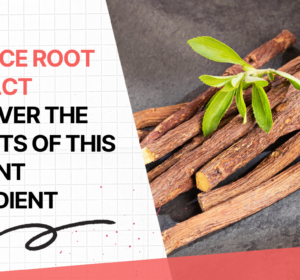Ageing is mainly a consequence of the oxidative processes occurring in the cells. About 80% of these oxidative processes are triggered by UV radiation. UV radiation produces oxygen free radicals which cause damage to proteins, lipids and DNA. As a consequence, the skin shows wrinkles and dark spots. Free radicals also reduce collagen production and uneven melanin synthesis. The skin has two mechanisms to protect against this damage. One tool is non-enzymatic and the other is enzymatic. The enzymatic mechanism involves the coenzyme Q10. In this post, I am going to talk about the benefits of this molecule in skincare.
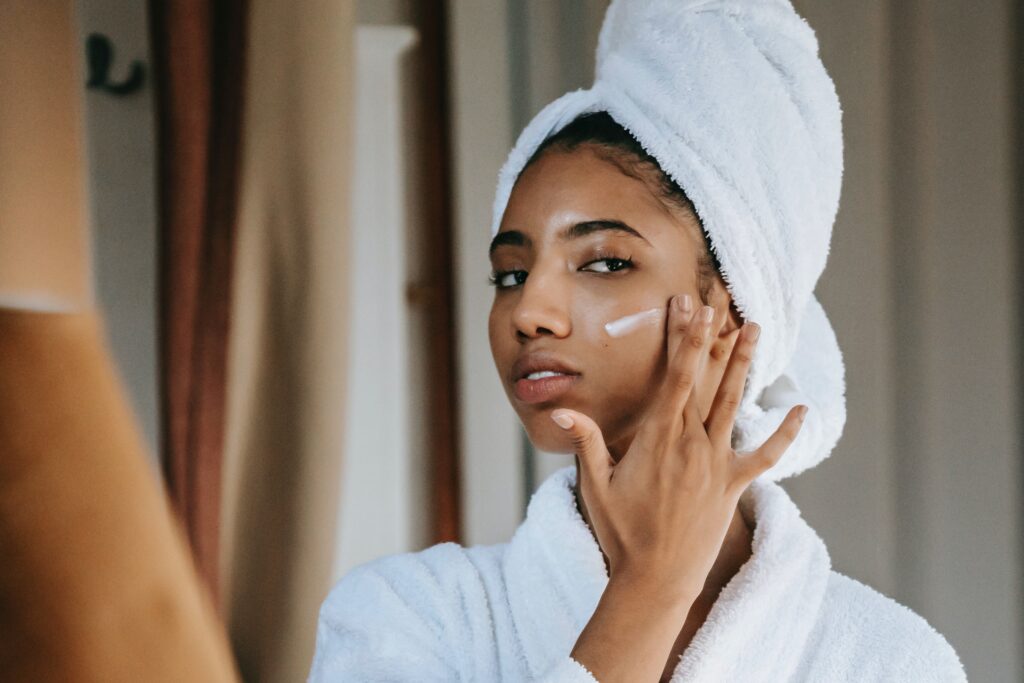
What is the Coenzyme Q10?
Coenzyme Q10 is a liposoluble endogenous molecule with different properties. Another name for this molecule is Ubiquinone (it is a quinone ubiquitous in animals and most common bacteria).
Chemically it is a 1,4-benzoquinone, where Q refers to the quinone chemical group and 10 refers to the number of isoprenyl chemical subunits in its tail. In natural ubiquinones, the number can be anywhere from 6 to 10. It is an electron transport chain component and participates in aerobic cellular respiration, which generates energy.
There are three redox states of CoQ: fully oxidized (ubiquinone), semiquinone (ubisemiquinone), and fully reduced (ubiquinol). The capacity of this molecule to act as a two-electron carrier (moving between the quinone and quinol form) and a one-electron carrier (moving between the semiquinone and one of these other forms) is central to its role in the electron transport chain and free-radical–scavenging antioxidant.
It used to come from horse tissue extraction. Actually, it was isolated for the first time in 1950 in Liverpool, England, from the lining of a horse’s gut. Nowadays coenzyme Q10 comes from a more animal-friendly process involving natural yeast fermentation.
Ubiquinone is mainly present in the mitochondria, where the electron transport chain occurs. In addition to boosting energy production the coenzyme Q10 is a powerful antioxidant which protects the cells from external damage.
The levels of coenzyme Q10 in the cells decrease with age and UV radiation exposure.

What are the benefits of this molecule?
Coenzyme Q10 has numerous benefits for the skin. Some of the most important I can mention:
- Protects against UV radiation damage. Coenzyme Q10 protects the keratinocytes from the damage caused by UVA and UVB radiation.
- Anti-ageing properties. The fibroblasts are the skin support. When they are damaged the skin becomes soggy. Coenzyme Q10 protects fibroblasts from UV radiation and ageing effects. It also helps with collagen production. These two effects together make the skin looks firm and smooth.
- Anti-wrinkle. Coenzyme Q10 helps to reduce wrinkle deepness.
- Anti-inflammatory
- Helps to prevent skin cancer.
- Helps to treat psoriasis
- Contributes to even the skin tone. Coenzyme Q10 blocks the enzyme tyrosinase. This enzyme is involved in the melanin production. As a consequence, coenzyme Q10 reduces dark spots.
- Energisises the skin
- It helps the skin to retain moisture
- Fights dullness
- Stimulates collagen and elastin production
How to use Coenzyme Q10
The two ways of using coenzyme Q10 are via topic application or oral ingestion.
Creams
When applied as creams, coenzyme Q10 penetrates the skin layers gradually. The concentration on the external skin layer is so much higher than in the deeper layers (only 2% of the applied coenzyme Q10 reaches the inner layers).
It is a safe ingredient because it penetrates the skin gradually. It is non-toxic and doesn’t produce skin irritation.
In most of cosmetic products, coenzyme Q10 is in the form of ubiquinol, a ubiquinone precursor.
Any product can contain coenzyme Q10 but the most frequent products containing it are toners, serums and moisturisers. Always apply coenzyme Q10 over clean skin. It is safe to use in combination with other ingredients, including retinoids.
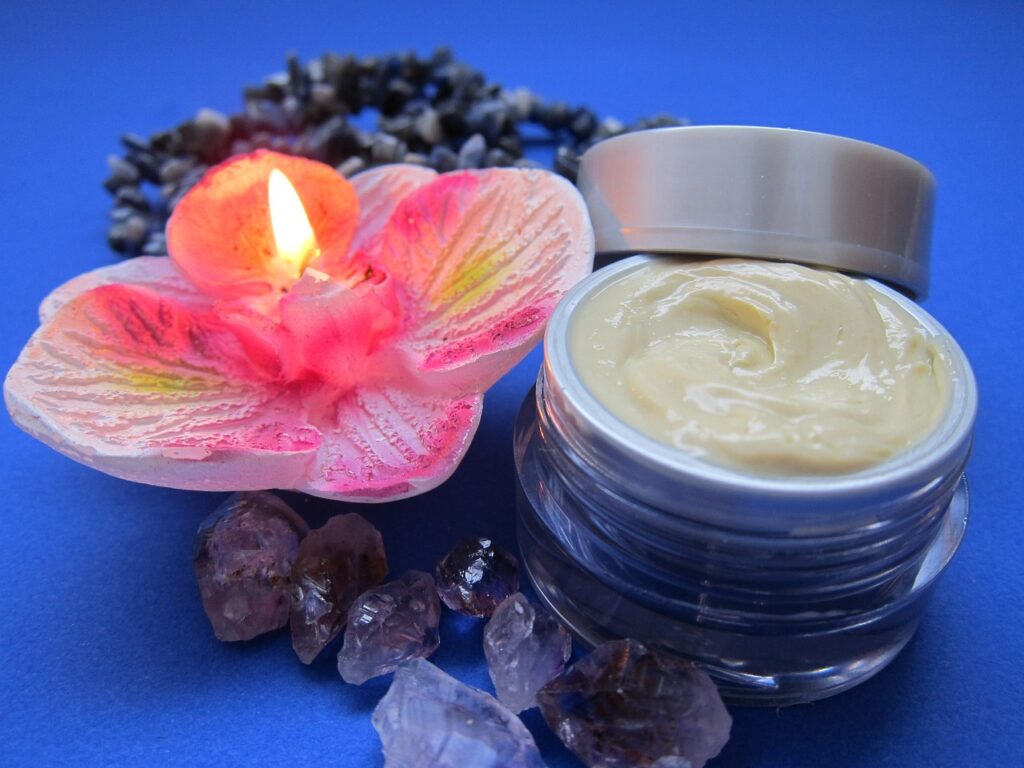
Oral Coenzyme Q10
Coenzyme Q10 is naturally present in some foods like meat, fish, veggies and fruits and nuts. It is also available in tablets as a supplement. Normally it comes as ubiquinol, as this precursor is absorbed easier. Up to 1200 mg per day, ubiquinol doesn’t produce any adverse effects.
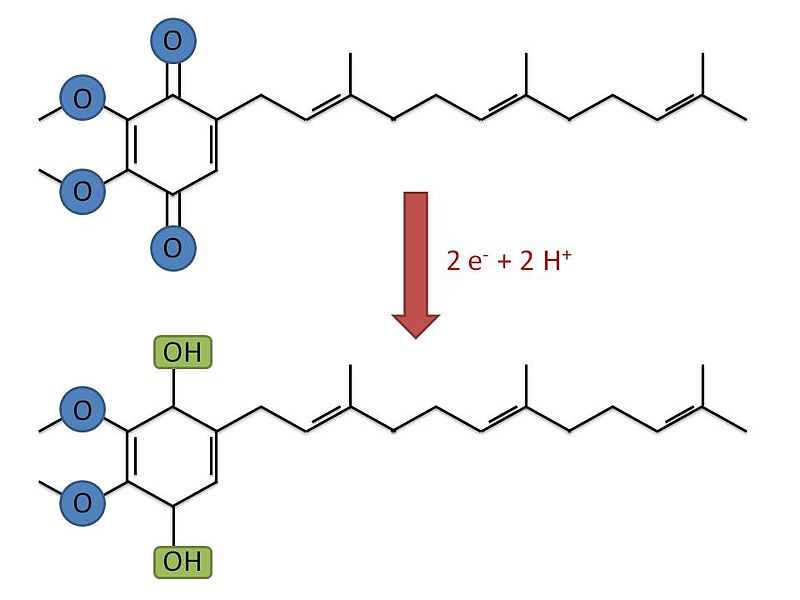
What skin type is Coenzyme Q10 good for?
Coenzyme Q10 is beneficial for any skin type, even for sensitive skin. It is a very gentle ingredient which doesn’t irritate the skin. Coenzyme Q10 has different benefits for different skin types.
Dry Skin
Coenzyme Q10 boosts the effect of moisturisers. It helps the skin to retain moisture and, therefore, it looks healthier.
Oily and combo skin
Coenzyme Q10 helps to unclog pores. It is ideal for people with oily skin or people who live in a very polluted environment.
Mature skin
The first signs of ageing appear between 30-35 years old. At this age, natural coenzyme Q10 levels start to decrease and it is when you should include it in your skincare routine.
Over 40 years old it is convenient to use this ingredient, not only on the face and neck but also over any area which is exposed to the sun.
Other facts about this ingredient
- Coenzyme Q10 can be suitable for vegans. Check its source before buying it as not all of them are vegan-friendly.
- It is a very safe ingredient which can be used during pregnancy
- Works really well with vitamin C and vitamin E, which protects the coenzyme Q10 against self-oxidation
- Coenzyme Q10 increases hydrating properties of liposomes.
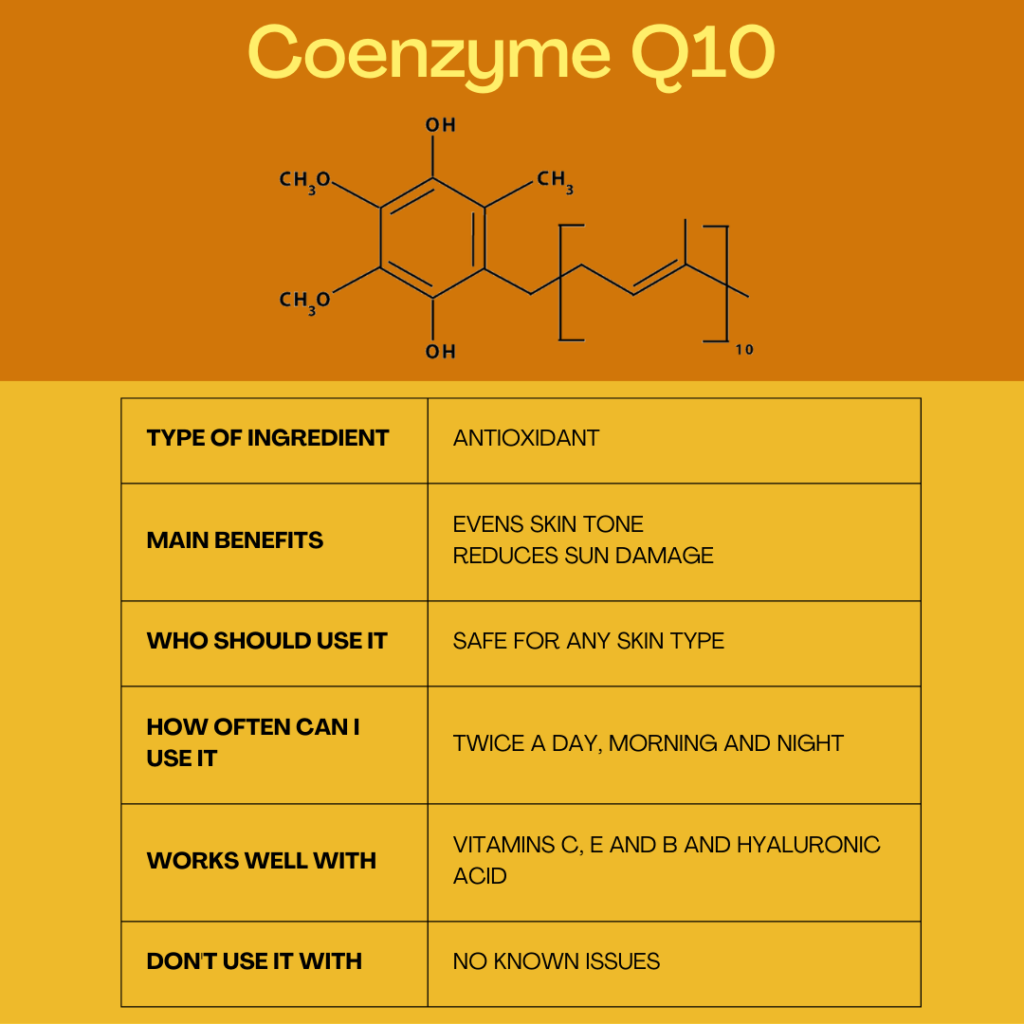
My Favourite Coenzyme Q10 Products
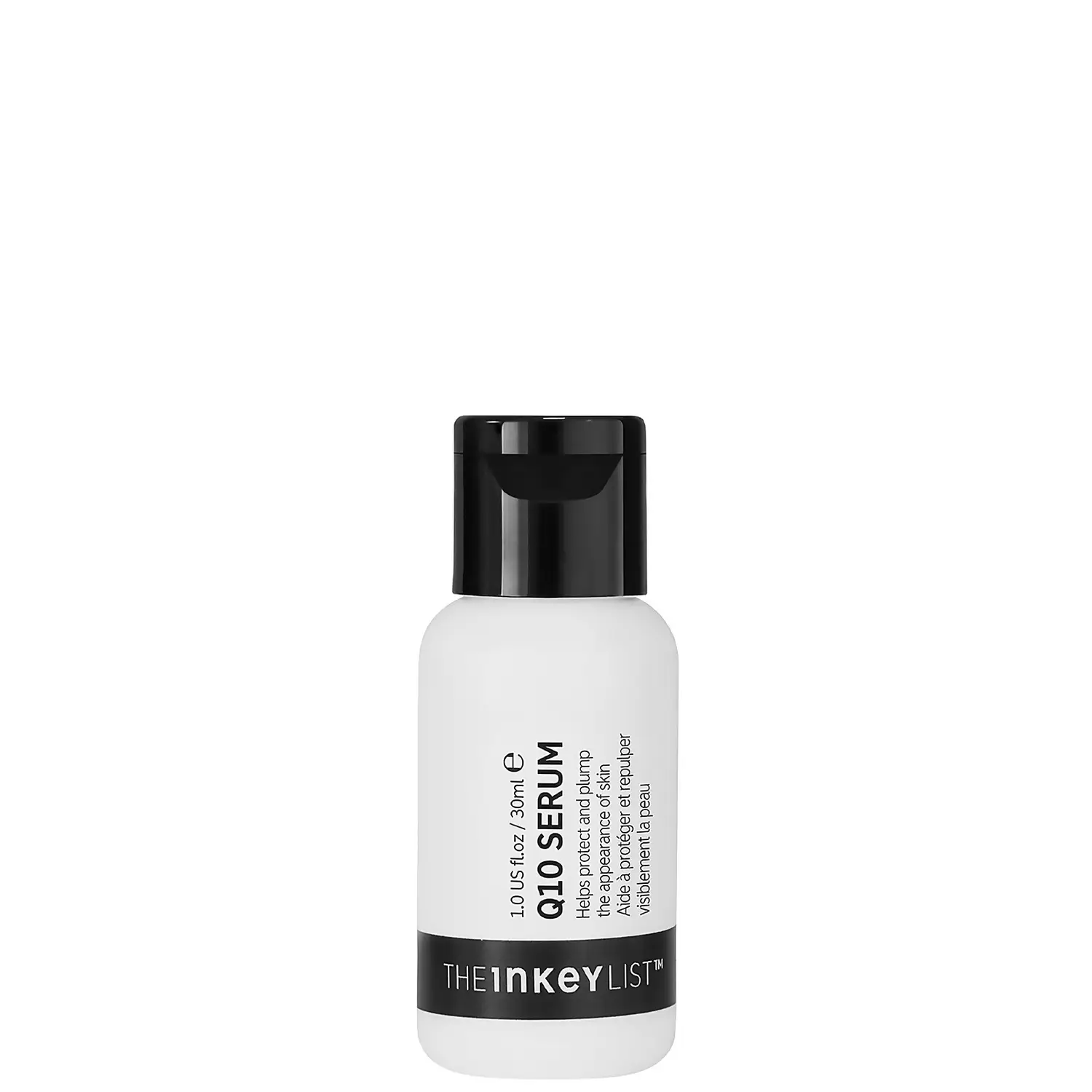
The Inkey List Q10 Serum
This is my favourite serum for face and neck. It has a light texture which absorbs quick.
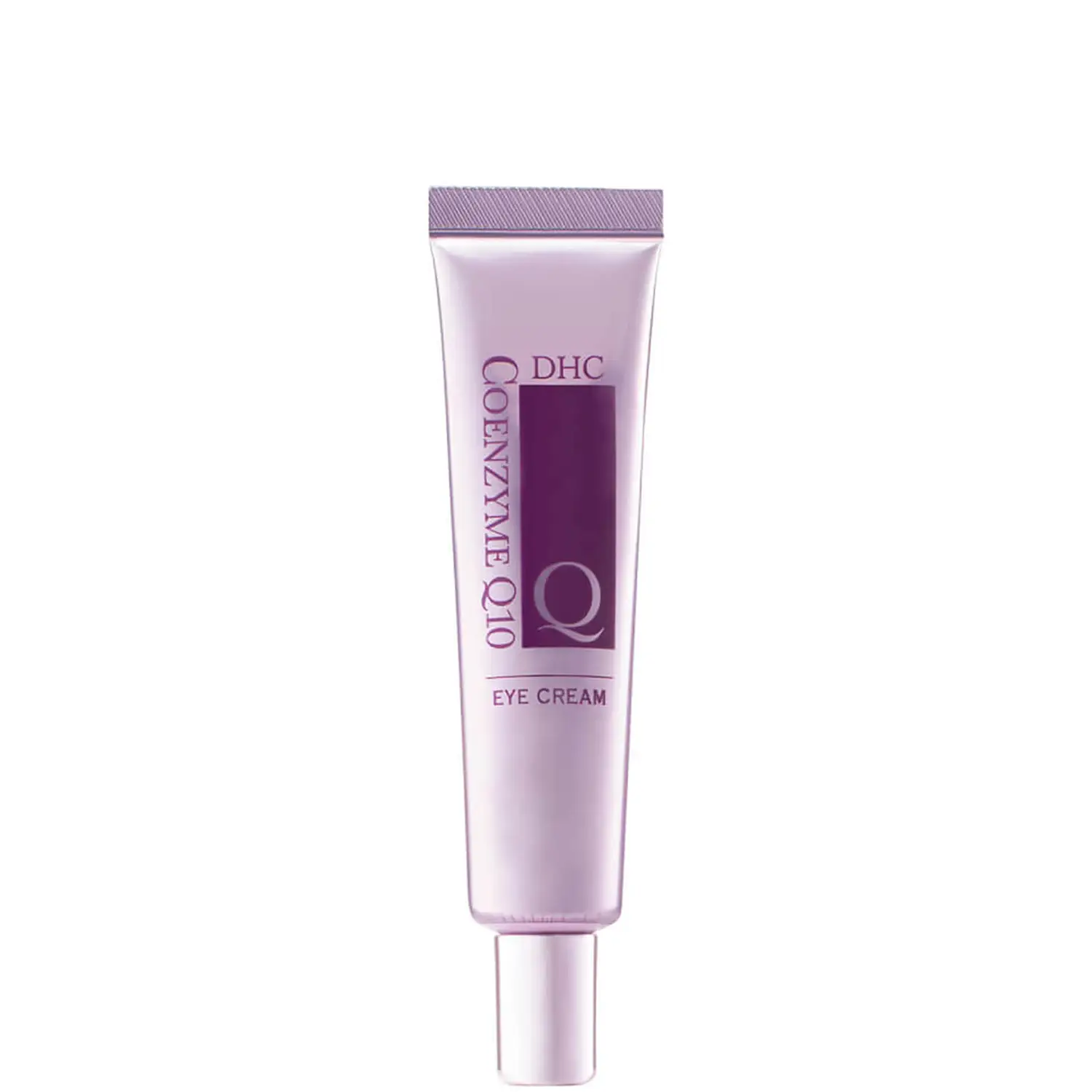
DCH CoQ10 Eye Cream
My undereye area also needs coenzyme Q10. This is a delicated area which needs a more specific products.
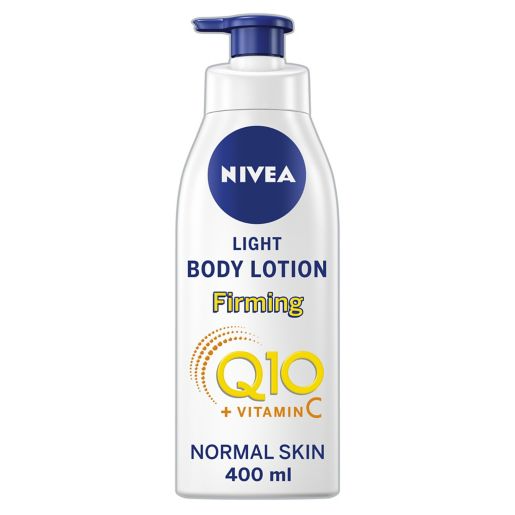
Nivea Q10 + Vitamin C Body Lotion for Dry Skin
I apply coenzyme q10 to my body every day. I chose this option as my skin is dry, but it is also available for other skin types.
In summary, coenzyme Q10 is a good anti ageing ingredient which doesn’t have any adverse effects on the skin. This ingredient is safe for any skin type, including sensitive skin, and it is compatible with any other ingredient.
I like to use coenzyme Q10 in combination with hyaluronic acid in my morning routine and combined with collagen and ceramides at night.
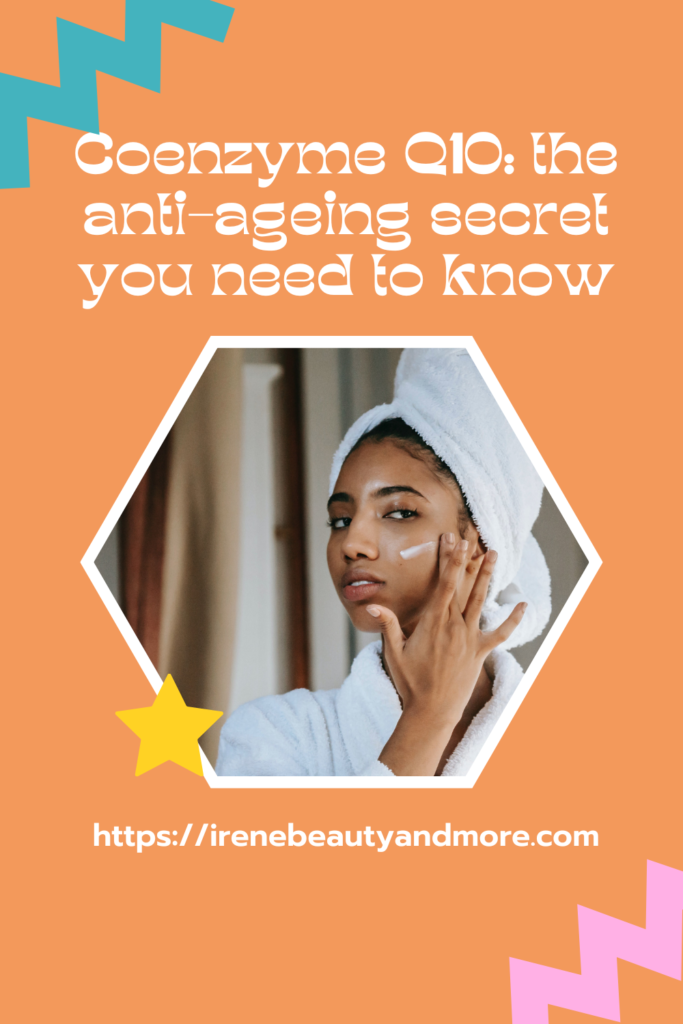
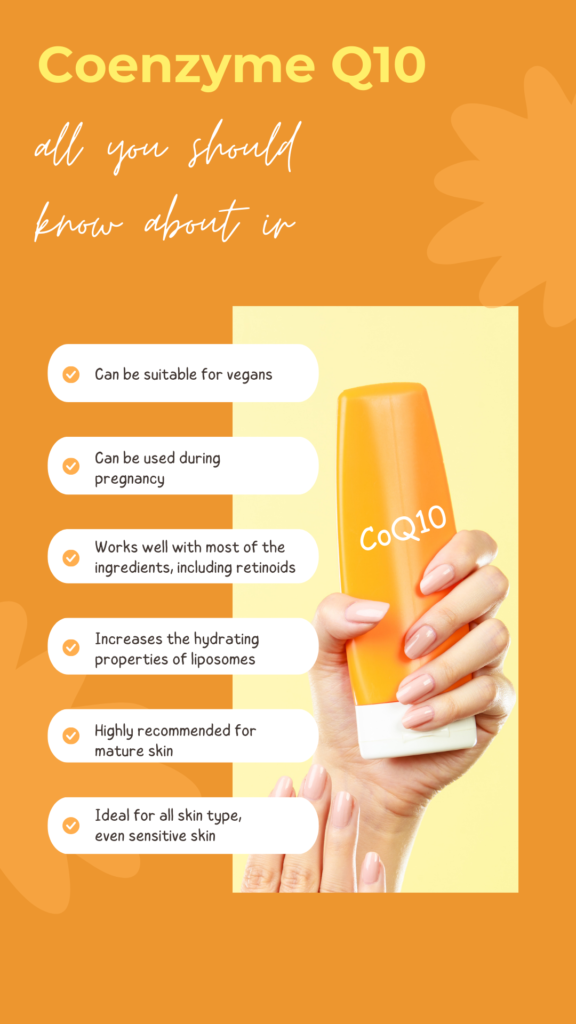
Bear in mind that some of the links in this post are affiliate links and if you go through them to make a purchase I will earn a commission. Keep in mind that I link these companies and their products because of their quality and not because of the commission I receive from your purchases. The decision is yours, and whether or not you decide to buy something is completely up to you.

